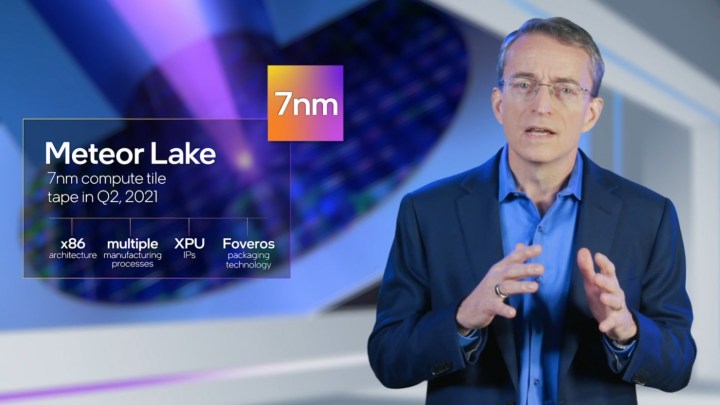Intel could harness one of the best features of Mac and iPhone processors in its future CPUs, according to a new rumor. YouTube channel Moore’s Law is Dead (MLID) uploaded a video focused around a Vision Processing Unit (VPU) in upcoming Intel processors, which could handle machine learning tasks like upscaling video, recovering over-exposed photos, and enhancing text-to-speech.
If this is the first time you’re hearing about VPU, you’re not alone. They come from a company called Movidius, which Intel acquired in 2016. It’s similar to the Neural Engine that Apple uses on its M1 desktop and tablet chips, as well as the one featured in iPhone chips from the iPhone 8 to the recently released iPhone 13 Pro.

It’s basically an A.I. accelerator, not dissimilar from the Tensor cores that show up on Nvidia RTX graphics cards. The rumor alleges that Intel is planning on integrating a VPU into its Meteor Lake processors, which are rumored to launch in 2023. Intel has confirmed that Meteor Lake will feature a modular design, which the company has been building toward.
Using its Foveros packaging technology, Intel plans to combine multiple manufacturing processes onto a single chip. Basically, they’ll look a lot like the Apple M1. In renders shown by Intel, the processors will feature a compute die where the CPU lives, a system-on-a-chip (SoC) that includes I/O, and a GPU die. The VPU will likely live in the compute die as Intel moves to a smaller manufacturing process with Meteor Lake.
It’s not a cop-out to say that the applications of a VPU are almost endless. Currently, Apple leverages its Neural Engine in apps like Translate for real-time text-to-speech translation and to recover detail in
For the Intel chip, one of MLID’s sources provided an example where you could highlight text and have it read to you. Dedicated A.I. accelerators have applications in gaming, too, as Nvidia’s Deep Learning Super Sampling (DLSS) has proved. Intel is using something similar for its upcoming Arc Alchemist graphics cards as well.
Despite the marketing buzz surrounding A.I. and machine learning, dedicated accelerators have dozens of applications in the data center and in consumer devices. Now, major tech companies are throwing difficult problems to machine learning, and the results speak for themselves. The A.I. upscaling on the Nvidia Shield is a testament to that.
Meteor Lake is still a ways off, and it’s important to reiterate that the VPU is just a rumor right now. Intel still has to take the first step of proving that it can design chips with a hybrid architecture, which it’s set to do with upcoming Alder Lake chips. For Meteor Lake, we’ll have to wait and see. A dedicated A.I. accelerator is plausible, though, if not likely.
Editors' Recommendations
- How Intel and Microsoft are teaming up to take on Apple
- Confused about Core Ultra? We were too, so we asked Intel about it
- Intel 14th-gen Meteor Lake: architecture, specs, and performance
- Even Intel’s best chips won’t catch up with Apple, TSMC CEO says
- iPhone 15 Pro overheating? Apple just issued a patch to fix it




